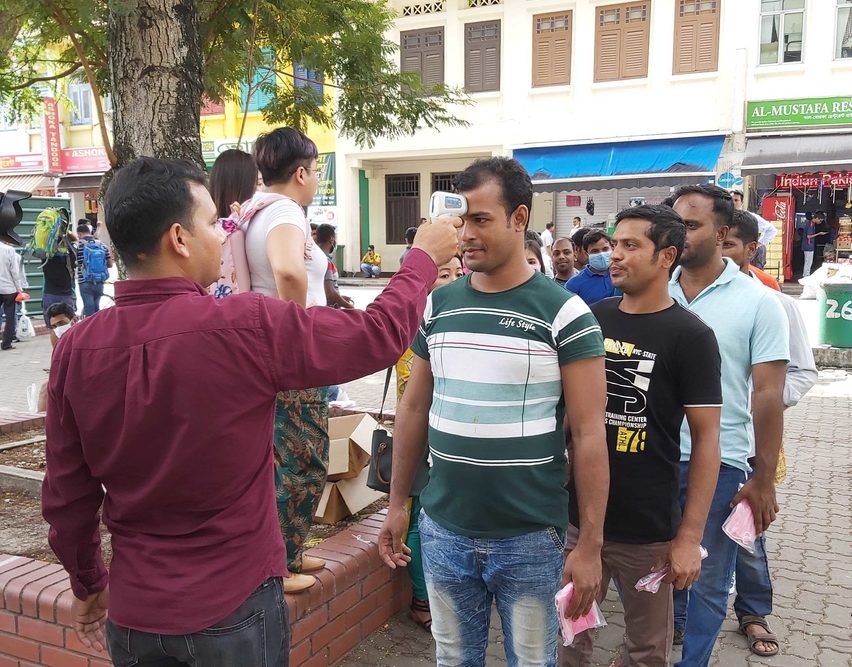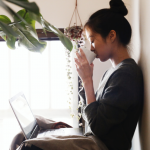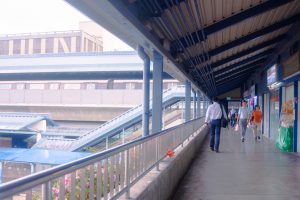Photos by the author save where otherwise stated.
Amongst these are posts calling for donations of masks, hand sanitiser, and vitamin C to be collected and distributed to migrant workers. You might have seen the one put out by itsrainingraincoats, an NGO, or a more recent one by TEDx Singapore.
Unfortunately, the need for such initiatives is as severe as it is obvious. As one of society’s least protected groups, migrant workers are amongst its most vulnerable when the proverbial shit hits the fan (or when coronaviruses savage our respiratory systems).
Despite literally building this country, they aren’t considered part of it. The measures that so many of us take for granted either don’t apply to them, or leave them out altogether.
They didn’t receive free masks from the government. They don’t have the resources to scour pharmacies for hand sanitiser or disinfectant wipes, which many employers haven’t and won’t trouble themselves to provide, given how hard they are to come by.
Construction workers live in massive dormitories that make instructions to ‘avoid crowded places’ completely moot. And between language barriers, financial need, and the fundamental power imbalance associated with their transient status, none of them are in a position to speak up and ask for more help.
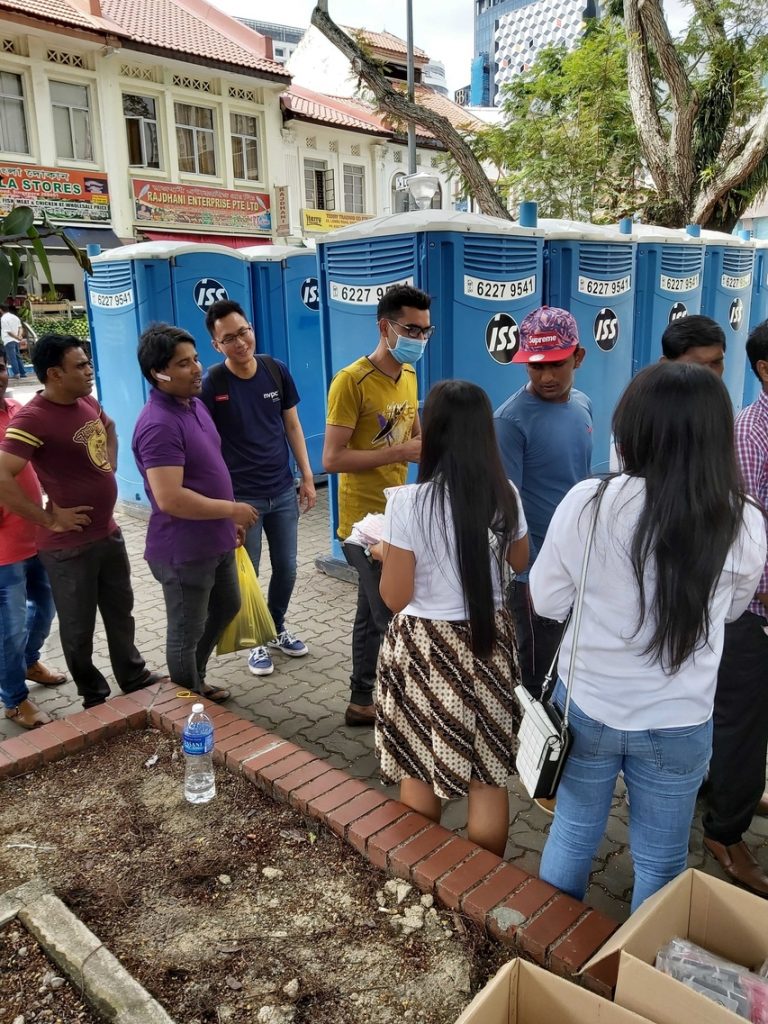
Last Sunday, 23rd February, I joined a group of volunteers helping to pack and distribute masks and advisory leaflets to migrant workers in Little India. The effort was the initiative of a domestic worker, Neng, who had mobilised volunteers to raise funds, before enlisting family members in Indonesia to source masks from a supplier, and then arranging for them to be brought to Singapore.
While handing out the mask packs, I took the chance to quickly ask workers—Indian and Bangladeshi men working in the construction sector—how they’d been coping with the outbreak. What measures had they seen rolled out in their dorms and worksites? Had the virus had other effects on their work?
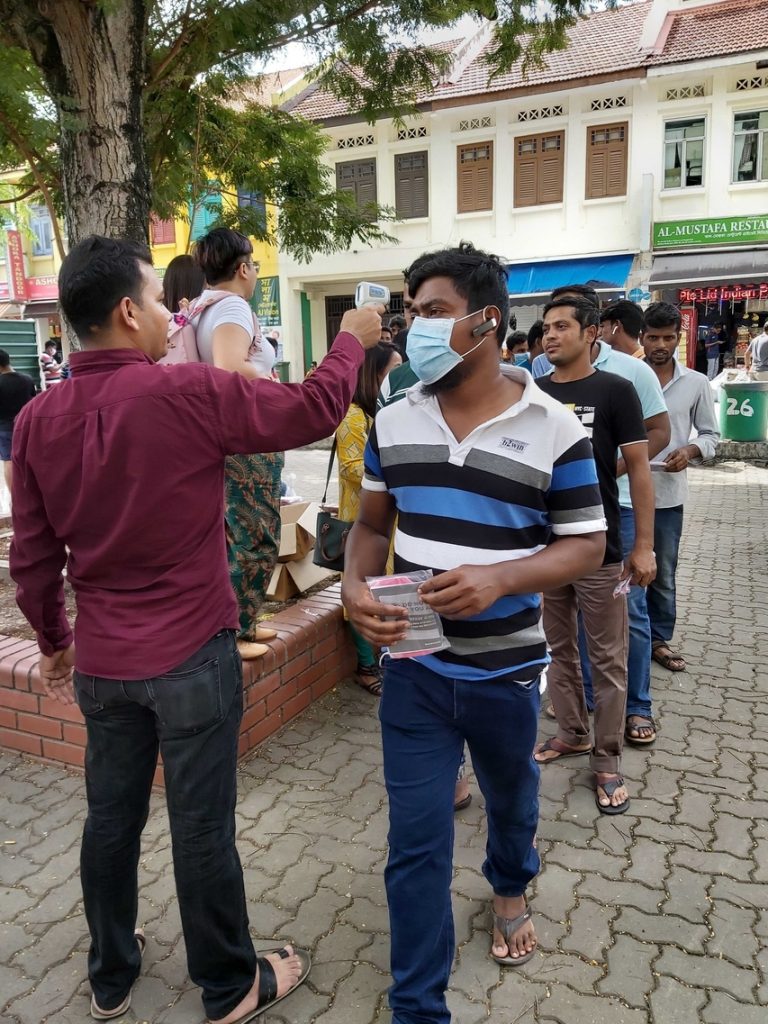
Temperature scanning: yes at worksites, mostly-but-with-more-gaps at their dorms. (At this stage, it’s worth mentioning that not all construction workers live in dorms, where operations are managed by private companies. Many live in temporary accommodation, sometimes in the very buildings they happen to be working on.)
Masks: one worker said his company had given them N95s, and a few got surgical masks, but most claimed they hadn’t received any. (I mostly got eye-rolls for asking this and emphatic claims of, “Nothing.”)
Hand sanitiser: please.
Were they given instructions on how to use said masks, or what to do if they fell sick? Posters (in English and in their native languages) had been put up in dorms, and some employers and dorm operators had held talks outlining what to do, but it wasn’t clear if these had been effective. Apart from the language barrier, some men claimed to have missed the sessions because they returned too late from work.
Had they been reminded to wash their hands more? Yes, but when you share a bathroom with so many other men, soap tends to be in short supply, and the bathrooms themselves would make even the most hardened Survivor cast member cringe.
Had dormitory events been cancelled? Yes, but they still share bedrooms with 10-15 other men, and kitchens with hundreds of others, so.
And on top of this, their Chinese colleagues have been caught up in the travel restrictions imposed earlier this month, so many have had their work schedules reorganised to get all hands on deck.
Against all this, two surgical masks and a leaflet felt like small comfort. It didn’t help that all 250 packs we were giving out were gone in minutes.
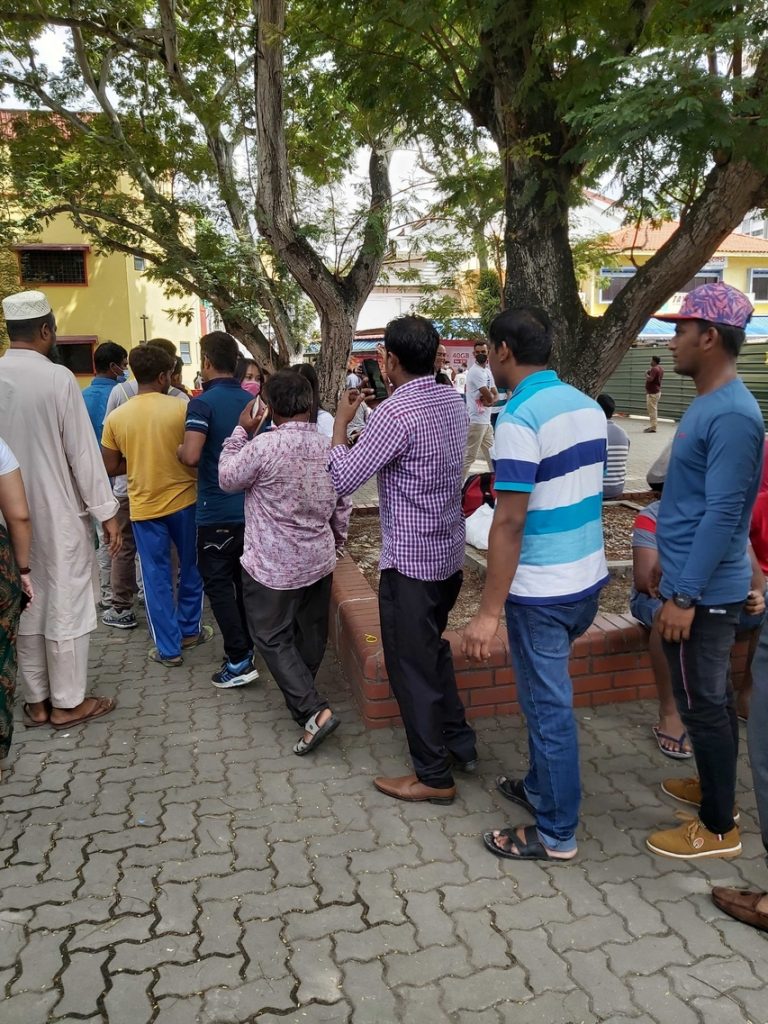
This is a helpful gesture, but it shouldn’t distract from the fact that long after the outbreak subsides, migrant workers will face the same challenges as they did before it started. Where their welfare is concerned, Covid-19 didn’t just create a new set of problems; it also exposed how existing cracks can widen into yawning craters under pressure.
The first is communication. One simple example to illustrate this: the use of masks.
While handing out the packs, it became obvious that many migrant workers didn’t know how or when masks ought to be used. Many began opening the packs and taking out the masks to wear on the spot. Cue frantic volunteers waving our hands and stressing, “NO, PLEASE DON’T, ONLY IF YOU’RE SICK.”
This goes beyond the difficulty of translating information into Tamil, Bengali, Mandarin, and several other native languages, and then getting dorm managers and construction companies to relay it with no broken telephone-style gap (a challenge which would apply regardless of DORSCON level). But migrant workers’ access to information, already limited in normal circumstances, falls far short of the speed and scope required for crisis communications.
Unlike you and I, who enjoy a constant, reliable stream of Covid-19 updates flowing in via government websites and the news, many migrant workers have to wait for information to trickle down to them, usually via their employers (to whom advisories are sent) or the efforts of NGOs. (It’s worth pointing out that many domestic workers, in particular, also have their mobile phone use circumscribed by their employers.)
Forget urgent clarifications about how Covid-19 spreads, or the details of the latest travel restrictions; just ensuring migrant workers are aware of standard information like their employment rights is hard enough. This not only contributes to a general climate of disempowerment, but creates room for confusion, anxiety, and disinformation to abound in a crisis.
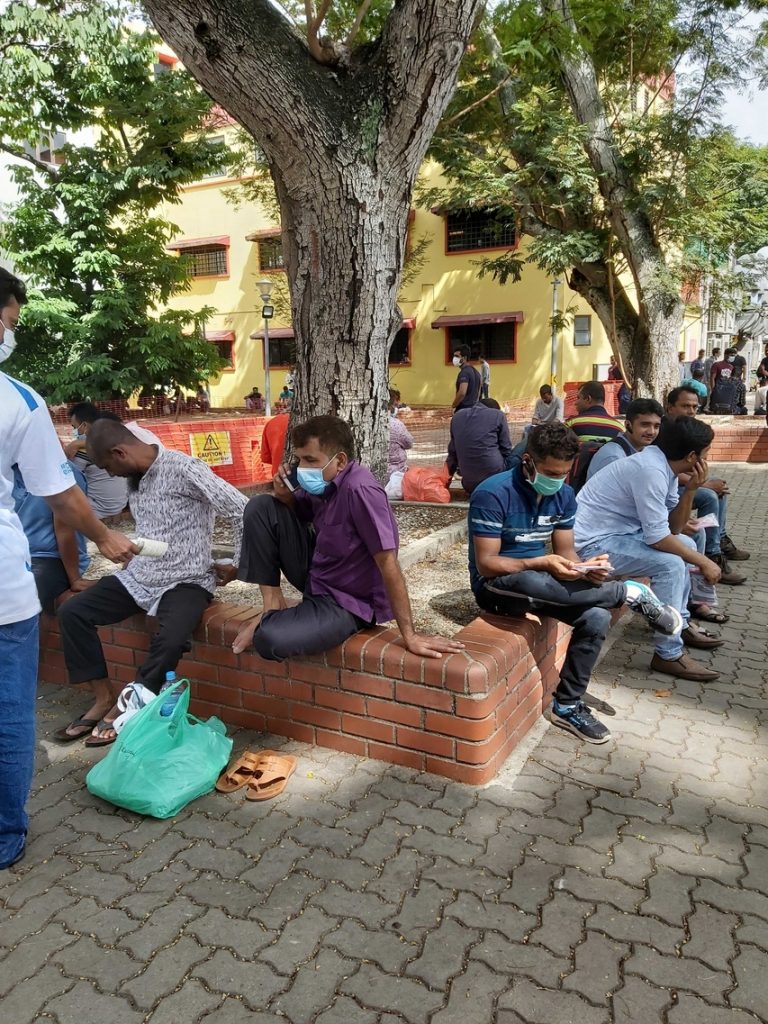
Anyone who’s had to share space with other human beings knows how hard it is to keep communal areas clean (case in point: the Rice office pantry). Multiply this several times over for your run-of-the-mill dormitory—bedrooms and bathrooms are shared by 10-15 men, and kitchens by hundreds—and just keeping the place sanitary starts to look like an accomplishment.
Concerns about workers’ accommodation existed long before Patient 0 brought Covid-19 to Singapore. As one paper notes, “outbreaks of infctious diseases such as typhus, dengue and pneumonia have been documented [amongst male migrant workers], possibly due to the high-density living conditions and occasionally less than satisfactory sanitary living conditions”.
Moreover, facilities are not always up to scratch, making hand sanitiser and disinfectant wipes a luxury.
Two men I spoke to, one of whom lives in a dormitory in Punggol and the other in Sembawang, told me about how broken sinks or showers often take weeks to be replaced. They showed me photos of their communal kitchens after a round of cooking, with a floor so grimy it deserved its own trigger warning.
According to them, dormitory operators sometimes reprimand them for ‘causing trouble’ if they bring issues to light, or question why repairs are taking so long.
To cap all this off, migrant workers do not enjoy access to government-subsidised medical care. They aren’t eligible for the reduced fees currently being charged by Public Health Preparedness Clinics (PHPCs) and polyclinics for diagnoses of respiratory illness, and HealthServe, the main NGO providing healthcare services to migrant workers, has had to temporarily close 2 of its 3 clinics due to resource constraints.
This said, on any given day, many workers would hesitate to see a doctor in the first place. They can’t afford the cost of both missing a day’s work and having to pay for treatment.
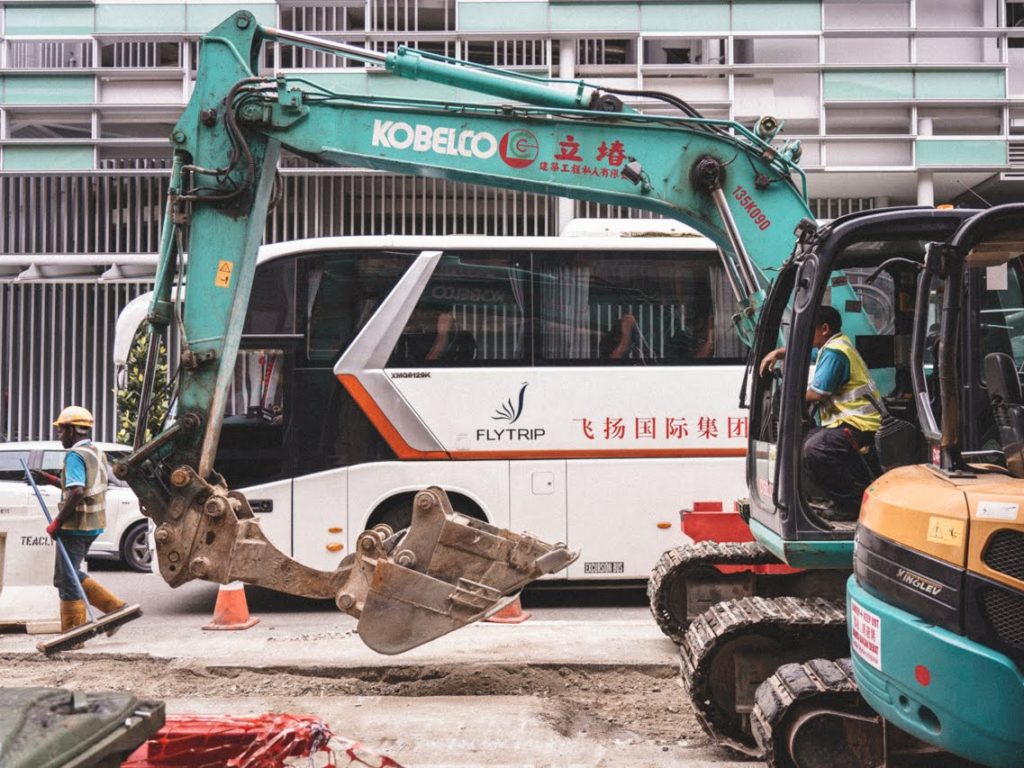
Vulnerable communities don’t suddenly become vulnerable because of a crisis; they are already vulnerable because of existing gaps in the system. Long after Covid-19 becomes old news and the last pack of masks is given out, migrant workers will remain one of our most poorly protected communities, unless or until things improve.
When we look back on the lessons learned from this period, we should remember that #SGTogether, after all, is not a hashtag that should only apply in bad times. It applies in the good, too—and the Singapore we’re rallying exists for all of us.
Migrant worker NGOs still need all the help they can get at this time, so please send support their way: HOME, TWC2, Healthserve, and itsrainingraincoats are but a few. In the meantime, send us your thoughts on this piece at community@ricemedia.co.
